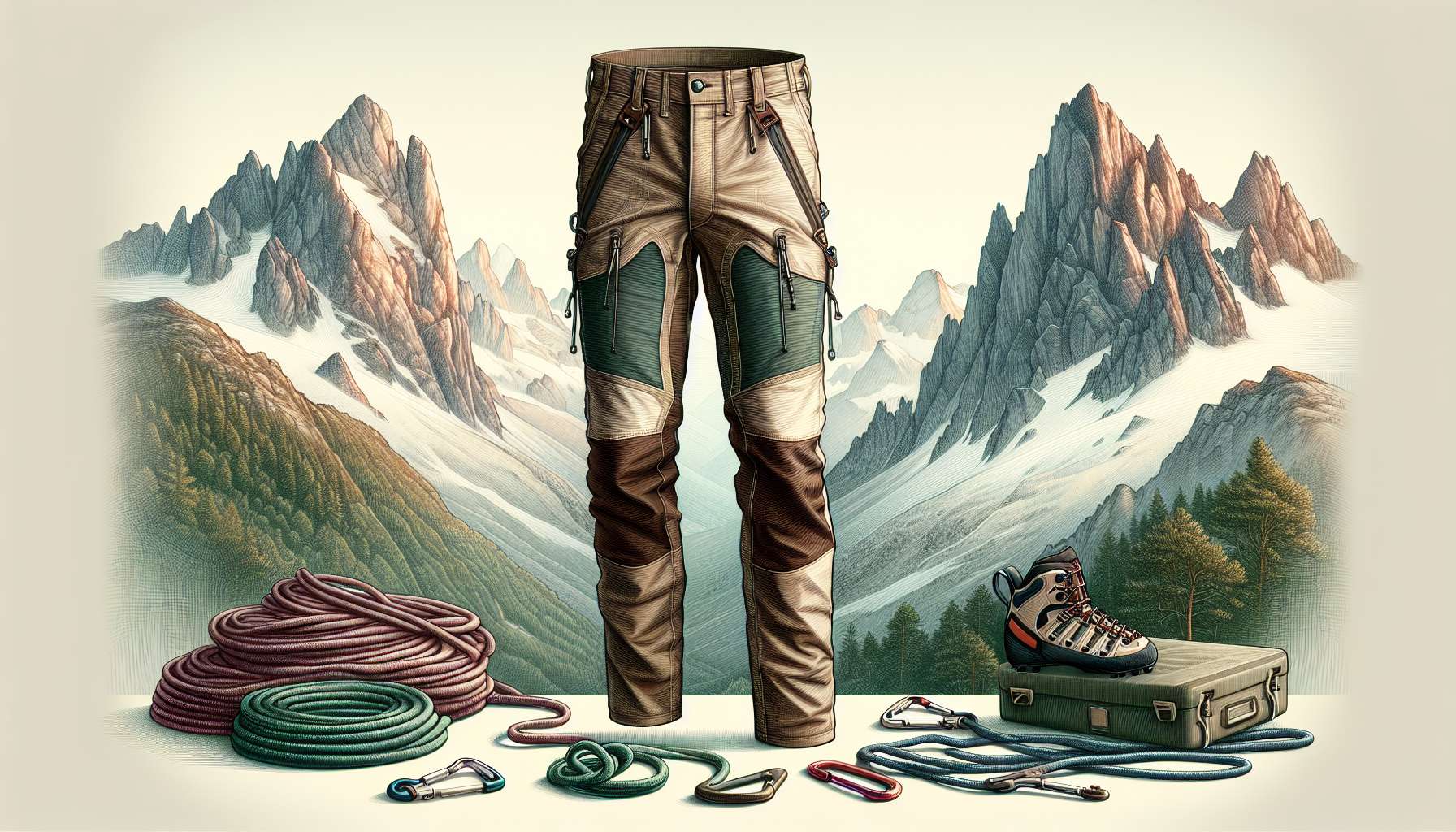Climbing Ropes: A Comprehensive Guide
When we think of adventure and adrenaline-pumping activities, rock climbing often comes to mind. Whether scaling a massive cliff face or conquering an indoor climbing wall, the thrill of reaching new heights is a universal draw for many outdoor enthusiasts. However, one crucial element that often goes unnoticed but is absolutely essential for a safe climbing experience is the climbing rope. In this comprehensive guide, we will delve into the world of climbing ropes, exploring their history, technology, applications, and more. So, grab your harness and chalk bag as we embark on this journey through the fascinating realm of climbing ropes.
The Evolution of Climbing Ropes
Before we dive into the intricacies of modern climbing ropes, it is essential to understand their historical evolution. The concept of using ropes for climbing dates back centuries, with early climbers relying on basic hemp or manila ropes for safety. These primitive ropes were heavy, prone to fraying, and lacked the dynamic stretch needed to absorb the impact of a fall.
Fast forward to the 20th century, and we see a significant leap in rope technology with the introduction of kernmantle ropes. These ropes consist of a core (kern) protected by a woven outer sheath (mantle), offering a perfect balance of strength, durability, and flexibility. Today, climbers have a wide array of ropes at their disposal, from dynamic single ropes for sport climbing to static ropes for rappelling and rescue operations.

The Anatomy of a Climbing Rope
Understanding the anatomy of a climbing rope is crucial for selecting the right one for your adventures. A typical climbing rope consists of three main components: the core, the sheath, and the finish. The core provides the rope’s strength and elasticity, with materials like nylon and polyester being common choices. The sheath, made of tightly woven fibers, protects the core from abrasion and UV damage. Finally, the finish refers to any treatments applied to the rope, such as dry coating to repel water or anti-static properties.
Modern climbing ropes come in various diameters, ranging from thin and lightweight for sport climbing to thick and robust for traditional climbing. Thinner ropes offer less friction and weight, making them ideal for redpoint attempts and alpine pursuits, while thicker ropes provide added durability and longevity for rougher terrain.
The Importance of Rope Safety
When it comes to climbing, safety should always be the top priority. Climbing ropes undergo rigorous testing to ensure they meet industry standards for strength, elongation, and impact force. Organizations like the UIAA (International Climbing and Mountaineering Federation) set strict guidelines for rope manufacturers to follow, guaranteeing the utmost safety for climbers.
It is vital for climbers to inspect their ropes regularly for signs of wear, such as fraying, cuts, or flat spots. Proper rope care, including coiling and storage, can extend the life of your rope and prevent accidents due to damaged gear. Additionally, understanding proper belaying techniques and rope management is essential for a safe climbing experience.
Types of Climbing Ropes
There are several types of climbing ropes available, each designed for specific purposes and disciplines. Let’s explore some of the most common types:
Single Ropes
Single ropes are the most versatile and widely used type of climbing rope. They are designed to be used on their own for lead climbing, top-roping, and rappelling. Single ropes offer a good balance of weight, durability, and stretch, making them suitable for a wide range of climbing styles.
Half Ropes
Half ropes, also known as double ropes, are used in pairs for traditional climbing and ice climbing. Each rope is clipped alternately to provide redundancy in case of a fall. Half ropes offer increased safety by reducing rope drag and allowing for longer rappels on multi-pitch routes.
Twin Ropes
Twin ropes are designed to be used together, with both ropes clipped through protection simultaneously. They are commonly used in alpine climbing and mountaineering, where long, wandering routes require minimal drag and weight. Twin ropes offer the highest level of redundancy but require careful rope management to prevent tangling.
Choosing the Right Climbing Rope
With so many options available, choosing the right climbing rope can be a daunting task. Consider the following factors to help narrow down your choices:
Strength and Durability
Look for ropes with a high UIAA fall rating and a durable sheath to withstand abrasion from sharp edges. Consider the type of climbing you will be doing and choose a rope that matches your intended use.
Diameter and Weight
Thinner ropes are lighter and easier to handle but may sacrifice durability. Thicker ropes offer added longevity but can be heavier and cause more drag. Balance your preferences for weight and durability based on your climbing style.
Length
The length of your rope will depend on the routes you plan to climb. Standard rope lengths range from 60 to 80 meters, with longer ropes required for multi-pitch climbs and alpine routes.
Expert Opinions on Climbing Ropes
To gain insight into the world of climbing ropes, we reached out to professional climbers and gear experts for their thoughts on this essential piece of equipment. Alex Honnold, renowned free solo climber, emphasizes the importance of choosing the right rope for each climb:
“The rope is your lifeline in climbing. It’s crucial to trust your gear and know that your rope can handle the falls you might take. I always opt for a reliable, well-tested rope that matches the demands of the route.”
Tommy Caldwell, famous for his groundbreaking ascents in Yosemite Valley, highlights the evolution of rope technology in recent years:
“The advancements in rope design have been game-changing for climbers. The introduction of dry treatments, thinner diameters, and improved sheath construction have revolutionized how we approach climbing. It’s exciting to see where rope technology will go next.”
Common Misconceptions About Climbing Ropes
Despite their importance, climbing ropes are often misunderstood by novice climbers. Let’s debunk some common misconceptions:
Myth: Thicker ropes are always safer.
While thicker ropes offer increased durability, they can also be heavier and cause more drag. Choosing the right rope diameter depends on your climbing style and preferences.
Myth: Ropes never need to be replaced.
Climbing ropes have a limited lifespan due to wear and tear from falls, exposure to UV rays, and general use. It is essential to inspect your rope regularly and replace it when signs of damage are present.
FAQs About Climbing Ropes
Q: How often should I retire my climbing rope?
A: The lifespan of a climbing rope depends on usage, storage conditions, and care. As a general rule, retire your rope after 5-7 years of regular use or if it shows signs of significant wear.
Q: Can I wash my climbing rope?
A: Yes, you can wash your climbing rope using a mild soap and lukewarm water. Avoid harsh chemicals or abrasive cleaners, and always dry your rope away from direct sunlight to prevent damage.
Conclusion
To wrap things up, climbing ropes are not just simple pieces of gearthey are lifelines that allow climbers to push their limits and explore new heights safely. Understanding the intricacies of climbing ropes, from their evolution to their modern applications, is essential for any climber looking to embark on a thrilling adventure. Remember to choose the right rope for your needs, inspect it regularly for wear, and always prioritize safety above all else. So, next time you gear up for a climb, take a moment to appreciate the humble yet indispensable climbing rope that keeps you secure on your journey to the summit.




